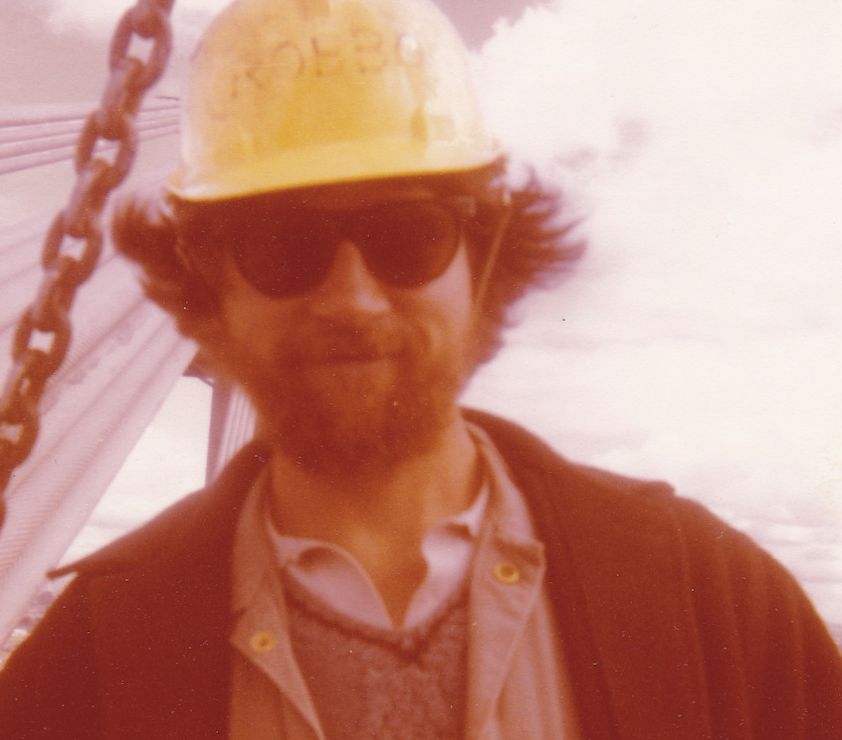
I was working as a concrete tester, driving from one Melbourne building site to another, when the West Gate Bridge fell down. Seven years later, I worked on the Bridge when it was put back together.
I was 27 years old the day I was issued with my overalls, my gloves, my felt “bluey”, yellow hard hat, spanner and scaffold key in October 1977. My wife and our four-year-old daughter and I had just returned from a six-month trip around Australia in a Kombi wagon.
I was employed as a rigger by the Joint Venture on the Spotswood side of the Yarra River.
Here the unfinished western section of the Bridge looked like a gigantic 'T' in the skyscape. The East and West construction zones mirrored each other from opposite sides of the river. 120-ton stiff-leg derrick cranes perched on the cantilevered tips of the steelwork. These stiff-legs lifted the massive box girders into place so that they could be bolted to the existing structure and welded by metalworkers.
On my first day, the engineers planned to lift a 29-ton box from a Pelican barge that had been floated into the middle of the river. This was a difficult process. My job was to operate one of the two winches that were anchored to the deck of the Bridge. Winch cables were lowered to the box below and tautened to prevent it spinning out of control once in the air. The wind conditions, however, were less than perfect, and the lift did not take place.
The next day was dead calm. Everything was readied once more. The box was again floated out to the middle of the river. The crane again lowered its hook down to the box. I peered down and watched tiny figures 200 feet below as they fastened three huge slings to the hook. As the hook rose, the slings slowly began to take weight. At the very last moment, however, Paddy Hanaphy — the head rigger — discovered an error in the slinging. The slings had to be unhooked, laid down and re-hooked. This would take time.
As it turned out, Paddy’s discovery was fortuitous. The box, once lifted, could not be lowered back onto the barge. So the problem of what to do with that kind of load, incorrectly slung and hanging mid-air, was avoided. More importantly, though, the delay allowed the crane driver to bring his hook back up onto the deck of the Bridge and service the moving parts.
Now, having nothing else to do, I ambled over to study the hook. Three big sheaves were encased in a heavy block. By a freak chance, I noticed a hairline fracture right through the middle sheave. I could see the sheave was wanting to crack apart. I turned and casually informed the men around me, not expecting my simple observation to trigger the alarm that followed.
Suddenly, engineers and bosses in white hardhats came running from everywhere. There was animated discussion. The lift was abandoned, not only that day, but for weeks afterwards. The crane was stripped — at a reported cost of $125,000 — so that less accessible sheaves could be visually inspected. The work schedule on the Bridge was set back three months while eight out of the 24 sheaves were replaced.
I asked an inspector with the West Gate Bridge Authority what would’ve happened if the box had been lifted. “All havoc,” he replied.
It’s not difficult to imagine the box rising slowly from the barge, as others had before, then one or more sheaves straining, then cracking and shattering under the enormous load. The cable reeving would have burst apart, sending the box into free-fall to smack! onto the men still on the barge down below.
Who knows if any of these men would have survived? Or if the crane would have been snapped from its mountings? Or how well the tip of the cantilevered bridge section would have withstood the violent jolt of a force never anticipated by its designers? Who knows if the passage of ships, carrying billions of dollars of cargo, would have been interrupted? Or if so, for how long?
Whatever the extent of any damage, shock waves would have rocked both the city and the nation, as they had in 1970. No doubt the Bridge would still have been built, but at what incalculable human and financial cost, and what incalculable delay? Would there have been a second Royal Commission? (There had already been calls for a Royal Commission into escalating costs.) Public confidence in the safety of the structure had been severely shaken by the original collapse. Who would use it now?
This incident wasn’t made public. No medals were struck. There were no press conferences or press releases. There were no headlines screaming, “BRIDGE NEARLY TUMBLES AGAIN”. For the Joint Venture and the government of the day, any thought of such bad press might have was as terrifying as the averted disaster.
**
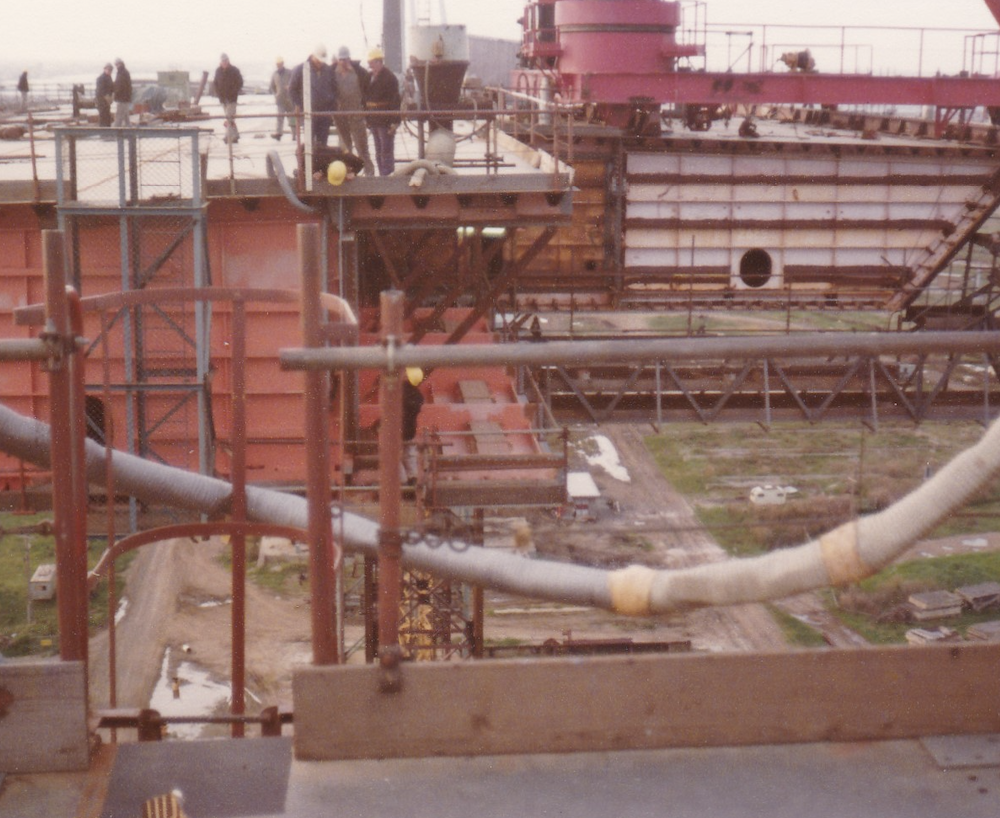
Even before the first sod of earth was turned, the project was plagued with controversy. There had been a history of union disputes. In August 1978, there was a 20-day strike because Federal Treasurer John Howard tried to increase tax on severance pay from 5% to 33.3%. This meant some workers would be thousands of dollars out of pocket. Later that year, the bosses retrenched a number of workers while others were still being hired. An all-union meeting was called. Ferry-loads of men from the Spotswood side made their way across the river, and packed into a large shed with their comrades from the East.
The mood in the shed was tense. Men with callused hands queued to have their say. Speaker after speaker made the point that the sacked men had been victimised because of their militancy. I got up and paraphrased Ned Kelly. “A man would be a nice sort of dingo,” I said, “to run out on his mates.”
Then John Cummins — whose ruggedly handsome deadpan face would later become the public image of Victoria's building workers — got up and made an impassioned speech. “Are we goin’ to cop this sweet? Are we goin’ to sit around twiddlin’ our thumbs while the bosses burn us? Are we goin’ to hold our heads up high, or hang 'em in shame?” There was wild applause, and a motion of solidarity was carried.
**
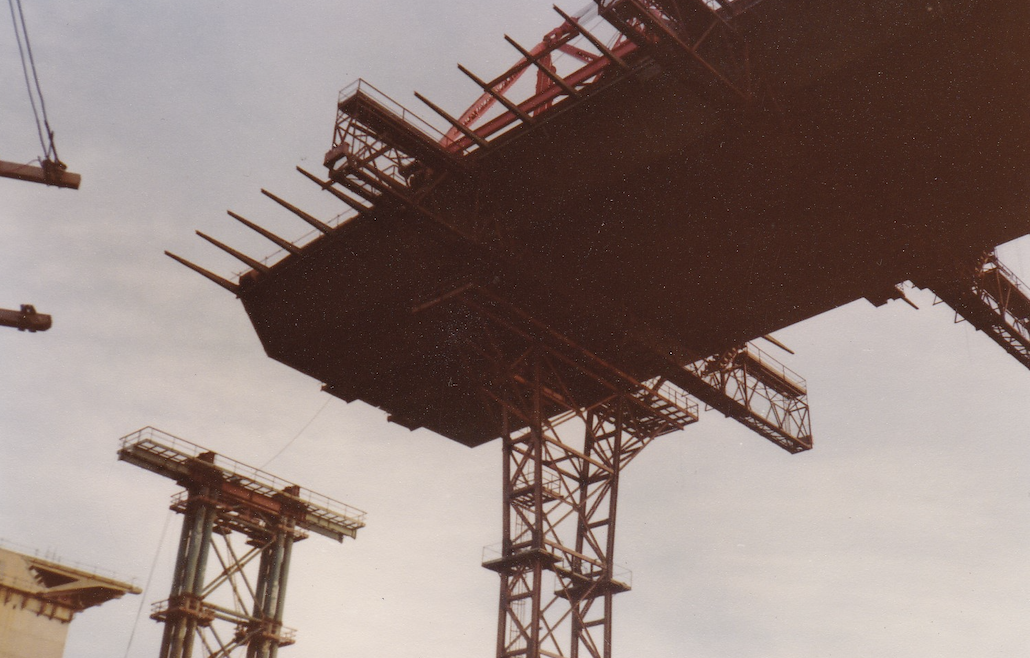
Like anyone, the men on the Bridge had faults. They were hard men. And rough. And direct. You never had any doubt about what anyone was thinking. (I had to resolve one difference of opinion out in the carpark.) But they were also funny, generous - and good at building bridges.
Most of the smoko sheds were a riot of noise and smoke and odours. I was in the quiet shed, with blokes who went straight home after work, and gave their whole pay packet to their missus. During breaks, there was always a game of 500 going on, and some sort of debate. We retreated to another set of sheds down below whenever we were winded off ... which was a fair bit.
Discussion often revolved around the collapse, and especially around the lucky escapes. Like when Jesus, a Spaniard, miraculously rose from among the dead after riding a box down to the ground. And as Jesus descended, Eddie the Boatman stepped out of the lift below. Hearing a low rumbling, he looked up to see 2,000 tons of steel and concrete rushing down to meet him. Running for his life, he was blown yards clear by the windblast that came a moment before the violent embrace of steel and earth.
Other men rode boxes down that day, and lived to tell their story. But life and death was a raffle. Men who caught the lift down survived. Men who waited for the next lift died. Men who had swapped shifts that day and stayed home survived. Men who swapped on were never seen alive again by their wives or children.
The collapse happened after a series of safety stop-works prompted by groaning and quaking. The men were repeatedly told the Bridge was safe. Only four months earlier, another box-girder bridge designed by Freeman Fox collapsed at Milford Haven in Wales, killing four men.
**
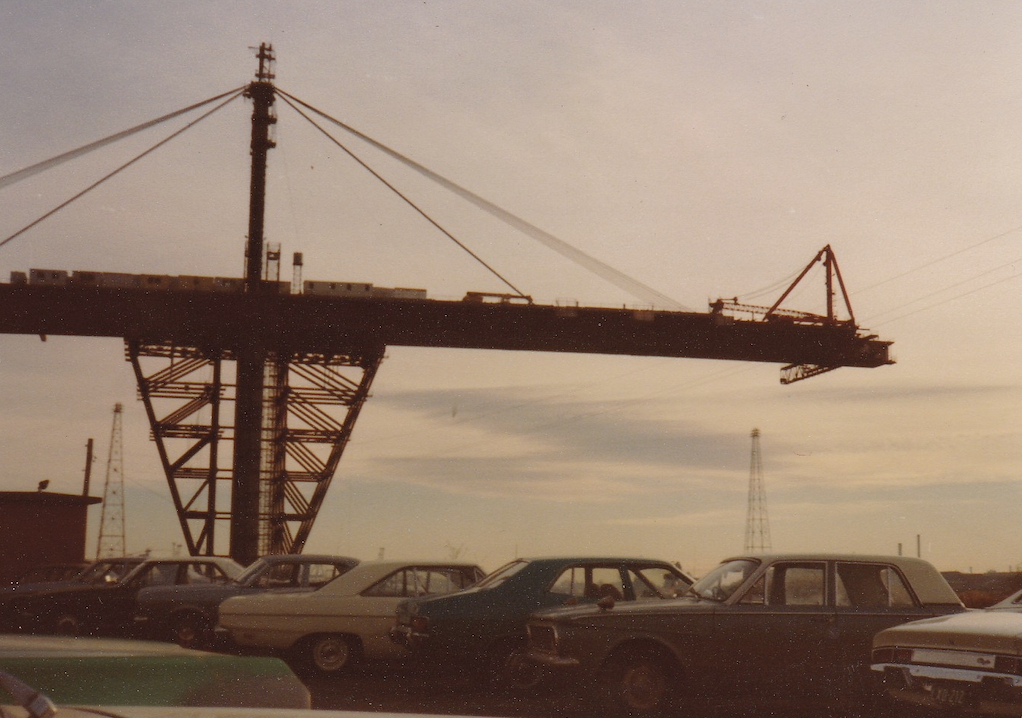
In my time on the job, I had many memorable moments. Working with characters like The Duke, Strawbs, Ahab the A-rab and Martin Bingham (my leading hand and a future challenger to Norm Gallagher). Riding a “dog box” 150 feet up to the top of a tower and eye-balling a Peregrine Falcon that was suspended mid-air just out of reach. Standing in an underslung gantry and greeting a foreign seaman who was manning a crow’s nest, and close enough to shake hands with, while the ship’s aerials scraped under the belly of the Bridge. Watching a pod of dolphins as they arched their way up the river.
The funniest moment for me came when Mick Corbett and the scaffold crew built a work platform in the gap between the concrete ramp and the steel section of the Bridge where the expansion joint was to be fitted. They started early and went to a great deal of trouble to make sure that the platform was nice and neat and flush inside the gap. Feeling pretty pleased about their handiwork, they went down to the sheds below to eat lunch. After lunch, they went back up to tidy things up. In the meantime, as the air temperature rose, the steel heated and expanded and crushed their work of art, much to the amusement of all the other crews.
The moment that I most regret related to a raffle, which I won. The prize was a dozen large bottles of Johnny Walker Whisky. Is there an alternative prize? I asked. Yes, I was told. A hundred bucks. I took the money, which was a lot back then, though much less than the value of the whisky. Nevertheless, I should have shared the whisky around with the men in my shed. Everyone was incredulous that I took the money. I am still known as a tight-arse.
**
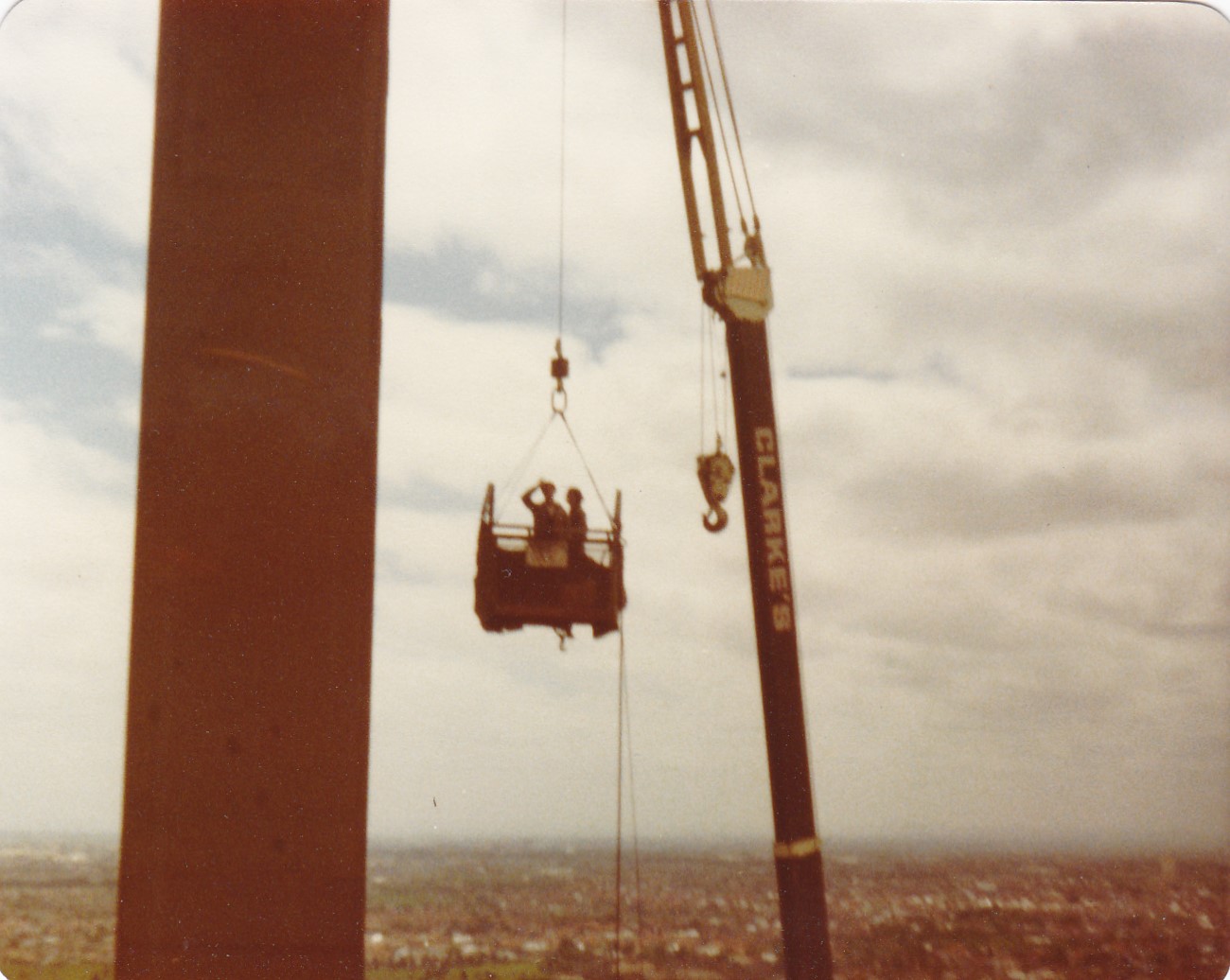
My most dangerous moment came on 31 May 1978, as Box 25 was being steadily lifted to finally join the Bridge together. This was the penultimate piece in the great jigsaw. The East and West construction zones were separated by barely more than the width of Box 25 — close enough for the builders’ labourers and ironworkers on opposite sides to sledge each other. The box had to be carefully guided up into the gap. Nothing could go wrong. The angle of the box had to be held spot-on during its ascent. If twisted, it would simply not fit into the gap.
Our level of excitement rose with the box. Already riding up on it was a number of workmen determined to bask in glory on this historic occasion. The box was decorated with flags of different nationalities and causes. The Southern Cross flag fluttered uneasily alongside the Croatian Tricolour. A number of old hands conspired against each other to become the first across the Bridge. (The first across, incidentally, was Paddy Hanaphy, who was waiting with a ladder inside the hollow belly of the existing structure.)
I was on the deck of the Bridge watching the box come up. This time, I had no particular job. Feeling like an extra in a movie, I wanted to bask in reflected glory. I looked around and noticed five or six riggers clad in felt blueys heaving themselves over the side of the Bridge. Instinctively, I followed them, scrambling down steps and ladders, and striding purposefully along the wooden planks of an underslung gantry. This platform had been progressively slipped along under the fixed sections to the very tip of the existing structure so that fitters could start bolting everything together once the box was in place.
I struggled to keep up with the others. It became clear that they intended to jump down onto the ascending box as soon as it was close enough.
We didn't have much time. Box 25 rose deceptively quickly towards the gantry. Its deck was already looming large. Without a word, the first rigger climbed over the handrail of the gantry. He leapt down five or six feet onto its deck, landing safely and joining the men who were riding it up. Then the second rigger jumped — four feet. One after another, the remaining men stepped down or jumped up through a rapidly diminishing space.
I was last.
Once the deck of the ascending box drew level with the bottom of the Bridge, it would turn into a great slow motion guillotine. There was now barely room for me to squeeze through, but throwing caution to the devil, I sprang from the handrail of the gantry and hurled myself upwards — like a high-jumper straddling a bar — somehow slipping between those gruesome jaws.
On landing, I was amazed to discover that I had not been crushed or mangled. I seemed to be unscathed. Maybe the Bridge Gods remembered that I had helped prevent a disaster seven months earlier.
I stood up and grabbed a rope to pretend that there was some reason I was there. An older man nearby cursed me in no uncertain terms. I tried to act cool while I strained on that rope and watched Box 25 draw flush with the decks of the two Bridge sections on either side.
**
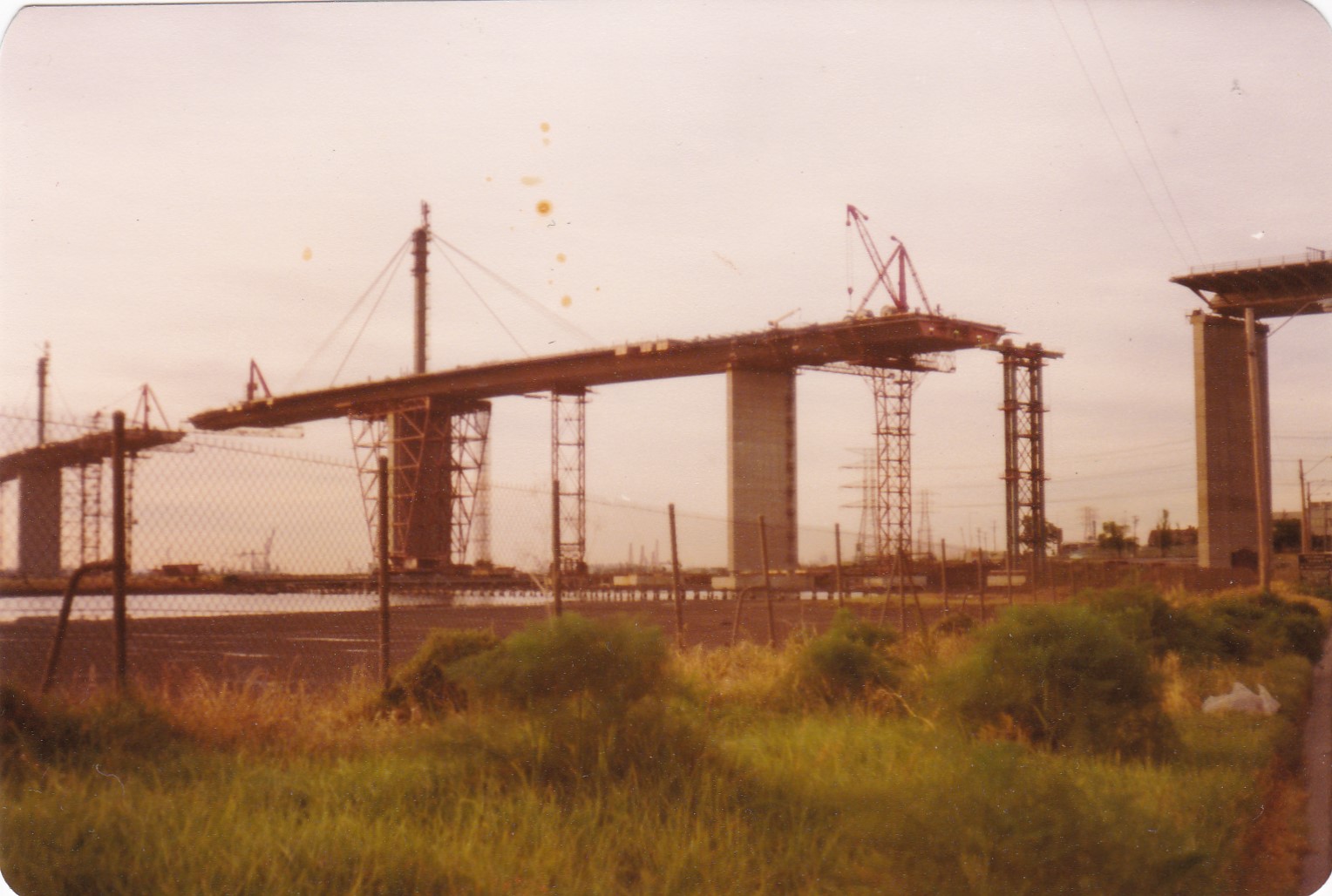
The Bridge took ten years to build at a cost of 37 lives and 200 million dollars. It is one of the great bridges of the world, built with the sweat and blood of the working class.
Today, its gentle curve sweeps high over the Yarra River as a lasting monument to the men who died building it. Their memory is honoured annually in a simple ceremony at the foot of Pier 10 each October the 15th.
